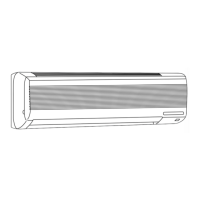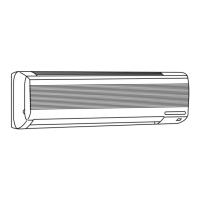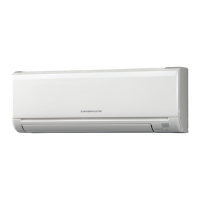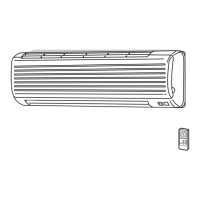
Do you have a question about the Mitsubishi Electric MSH-12NV and is the answer not in the manual?
| Type | Split System |
|---|---|
| Cooling Capacity | 3.5 kW |
| Heating Capacity | 4.0 kW |
| Indoor Unit Dimensions (W x H x D) | 798 x 295 x 232 mm |
| Outdoor Unit Dimensions (W x H x D) | 699 x 538 x 249 mm |
| Refrigerant | R410A |
| Power Supply | 50 Hz |
| Noise Level (Outdoor) | 50 dB |
Explains symbols used in the manual for warnings and instructions.
Advises against shared outlets and extension cords to prevent electrical hazards.
Emphasizes cleaning plugs and avoiding cord damage to prevent fires or shocks.
Covers safe plug handling during operation and avoiding vent insertion.
Addresses direct cool air exposure and customer repair/installation prohibitions.
Guides actions for burning smells and advises against customer installation.
Covers power cord, water cleaning, ventilation, and wet hand operation.
Addresses placement of pets, special uses, sprays, and stoves.
Covers precautions for long-term storage and high humidity operation.
Addresses safe handling during installation, panel removal, and filter access.
Details grounding requirements and earth leakage breaker recommendations.
Warns against installing in areas with potential flammable gas leaks.
Identifies various components of the indoor air conditioner unit.
Identifies various components of the outdoor air conditioner unit.
Details the buttons and sections of the remote controller.
Instructions for connecting power to the indoor unit before operation.
Step-by-step guide to set the current time on the remote controller.
Covers remote signal range, wall mounting, and battery replacement.
Describes the procedure for emergency operation when the remote control fails.
How to initiate and terminate the 'I FEEL...' auto operation mode.
Guide to adjusting temperature based on personal comfort in 'I FEEL...' mode.
Explains automatic mode selection and notes on COOL/HEAT performance.
Describes the meaning of the operation indicator lights on the indoor unit.
How to choose between COOL, DRY, and HEAT modes using the remote.
Steps to raise or lower the set temperature in manual modes.
Notes on unique behaviors in HEAT and DRY modes, including fan stop and temperature control.
Provides tips for efficient cooling, like closing blinds and using heat shield film.
Recommends set temperatures for comfortable warmth based on external conditions.
Explains the relationship between humidity, temperature, and human comfort.
Guide to changing fan speed using the remote's FAN button.
How to set the vertical vane direction using the remote's VANE button.
Explains automatic airflow adjustments in cooling and heating modes.
Explains how horizontal vanes auto-adjust based on operation mode.
How to manually adjust horizontal airflow direction using vertical vanes.
Instructions to enable the sleep mode for reduced airflow sound.
How to deactivate the sleep mode by pressing the SLEEP button again.
How to initiate the swing operation for wider air distribution.
How to cease the swing operation by pressing the SWING button again.
Step-by-step guide to set the timer for turning the unit on.
Step-by-step guide to set the timer for turning the unit off.
Information on using ON and OFF timers in combination for programmed operation.
Steps to take before storing the unit for an extended period.
Instructions for preparing the air conditioner after a long period of disuse.
Essential safety steps before performing any maintenance tasks.
Guide on how to clean the indoor unit using a soft dry cloth.
Instructions for removing and cleaning the air filter.
Instructions for removing and cleaning the deodorizing filter.
Steps for replacing the deodorizing filter, including recommended interval.
Steps for replacing the air cleaning filter, including disposable nature and interval.
Checks for when the air conditioner fails to start or operate.
Checks for when the unit does not cool or heat effectively.
Checks for when the remote controller display is blank or signal is lost.
Guidance on what to do after a power outage, including pressing ON/OFF.
Explains sounds like crackling, fan stops in DRY mode, and refrigerant flow.
Addresses room odors and changes in airflow direction during operation.
Advises on suitable and unsuitable locations for installing the unit.
Guidelines for electrical connections, circuit, and grounding.
Covers periodic inspection, maintenance, and considerations for operation sound.
Warns against customer relocation and the need for professional service.












